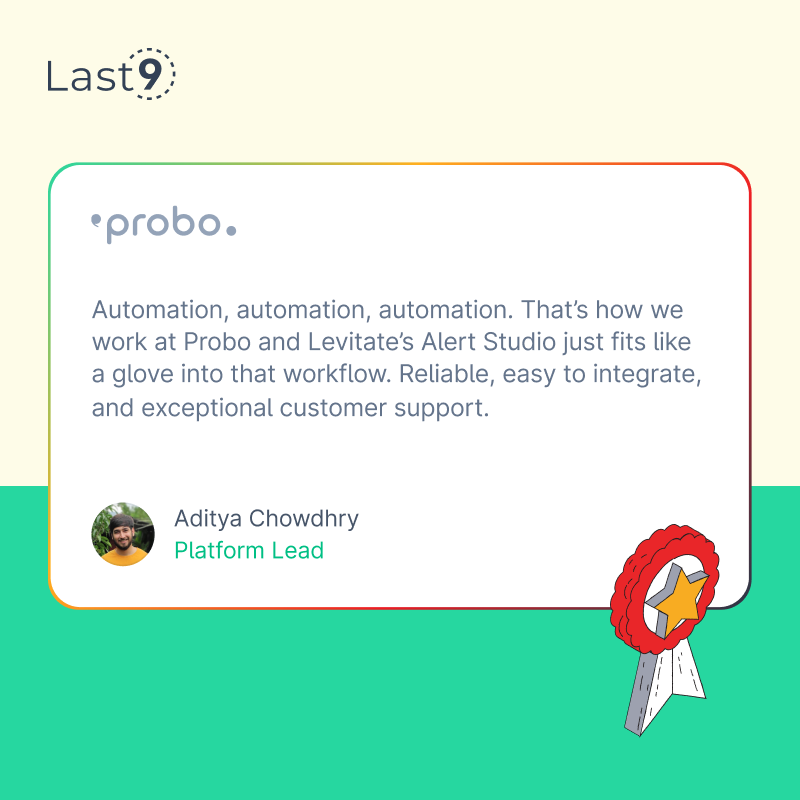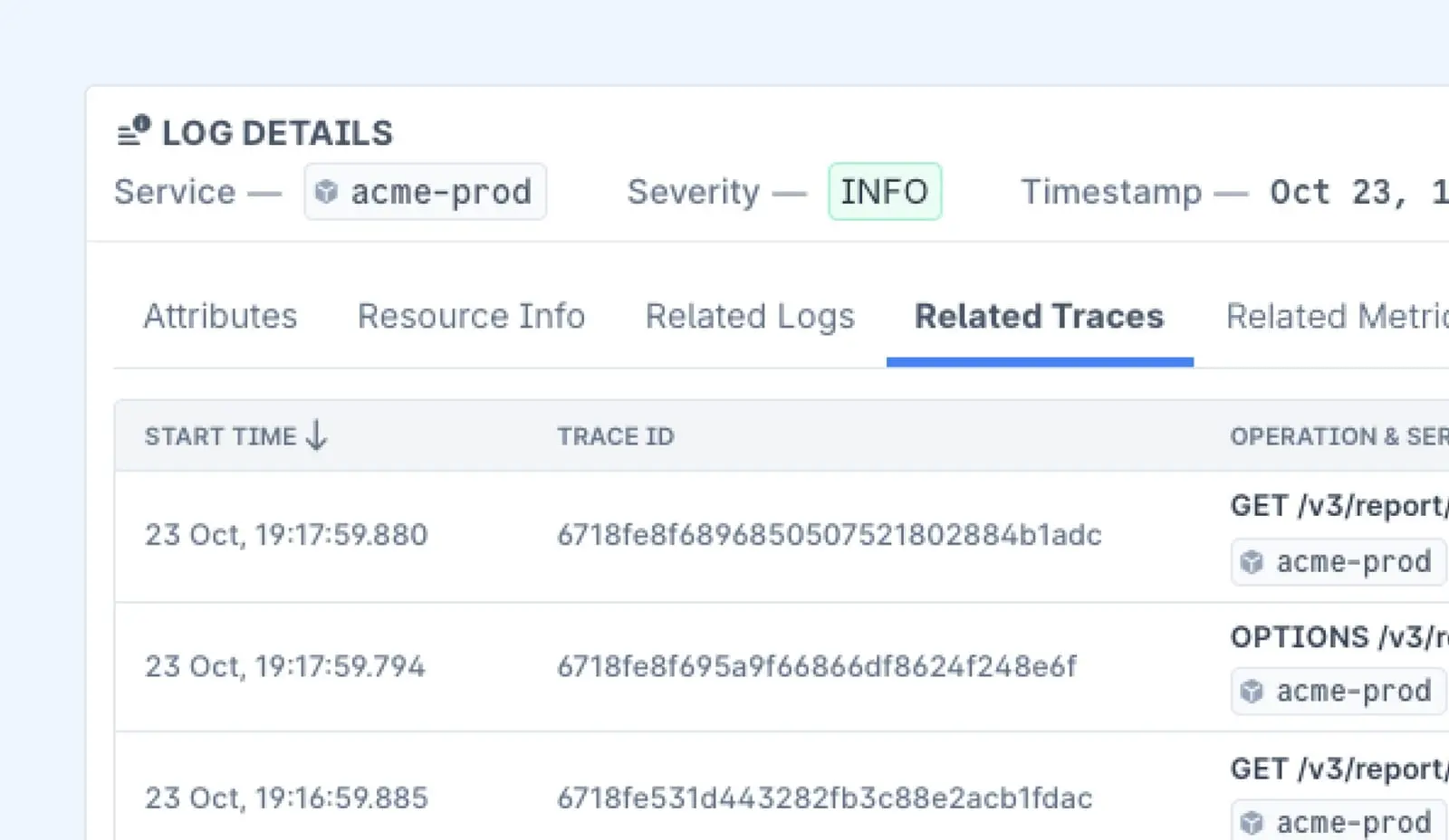Organizations today are constantly striving to improve their systems' performance, reliability, and overall health. The journey toward achieving this is where observability comes in.
Observability is the ability to measure and understand what’s happening inside your systems, and it’s a game changer for troubleshooting and performance optimization.
But how do you know if your observability practices are where they need to be? That’s where the Observability Maturity Model comes in.
It provides a roadmap to assess where you are on your observability journey and how to level up your practices over time.
What Is the Observability Maturity Model?
The Observability Maturity Model is a framework that outlines different stages of maturity in an organization's observability practices.
It helps teams assess their capabilities, identify gaps, and develop a strategy for improving observability across their systems.
The model is often broken down into several stages, each representing a level of sophistication in how data is collected, analyzed, and used.

The Anatomy of a Modern Observability System
Why Does the Observability Maturity Model Matter?
The Observability Maturity Model is more than just a way to assess your systems; it’s a strategic tool that can help you:
Identify Gaps
Understand where your observability practices fall short, whether it’s in data collection, analysis, or response times.
Plan Improvements
Map out a clear strategy for improving observability over time, with measurable milestones.
Align Teams
Bring together developers, operations, and business leaders to work toward a common goal of improving system visibility and performance.
Enhance Decision-Making
With more mature observability practices, teams can make better decisions about system optimization, incident management, and resource allocation.
Key Stages in the Observability Maturity Model
1. Ad-Hoc Observability
At this stage, observability is reactive rather than proactive. Teams might have basic logging in place, but there’s no unified approach to how data is collected or analyzed.
Troubleshooting is a manual process, often involving sifting through logs without context or understanding the broader system picture.
Key Features:
- Limited monitoring tools or basic log aggregation
- Minimal correlation between data sources (metrics, logs, traces)
- Mostly reactive troubleshooting

Top Observability Best Practices for Microservices in 2024
2. Foundational Observability
This stage marks the beginning of more structured observability practices. Teams start to implement monitoring solutions, and some basic automation may be in place.
Metrics, logs, and traces are now collected more systematically, but the systems may still be siloed, meaning insights are not always readily accessible or actionable.
Key Features:
- Implementation of basic monitoring and alerting
- Some correlation between logs and metrics
- Manual analysis of data with some automation for alerts
3. Integrated Observability
At this point, teams have begun integrating various observability tools and data sources, allowing for more comprehensive insights.
Logs, metrics, and traces are often correlated automatically, and teams can proactively monitor system health. Alerting becomes more intelligent, reducing noise and focusing on actionable insights.
Key Features:
- Integration of logs, metrics, and traces
- Proactive monitoring with automated alerting
- Better context for troubleshooting with data correlation
4. Advanced Observability
Organizations at this level are running sophisticated observability practices. They’ve invested in robust tools that allow for advanced querying, anomaly detection, and even predictive analytics.
Insights from observability data are now deeply embedded in the development and operational workflows, allowing teams to take action before issues become critical.
Key Features:
- Advanced analytics, anomaly detection, and predictive insights
- Deep integration of observability into DevOps workflows
- Automated responses to certain types of incidents or anomalies

Full-Stack Observability for Better Application Performance
5. Optimized Observability
At the highest level of maturity, observability is fully optimized, and data-driven decision-making is embedded in the organization’s culture.
The systems are self-healing, with automated responses to incidents, and teams are continuously improving observability practices through feedback loops.
This stage represents an organization where observability is deeply woven into the fabric of all operations.
Key Features:
- Self-healing systems with automated incident response
- Continuous feedback and improvement of observability practices
- Full integration with business objectives and workflows
How to Advance Through the Maturity Stages
Advancing through the stages of the Observability Maturity Model requires more than just adding new tools.
It’s about creating a culture where observability is prioritized and deeply integrated into workflows.
Here are some steps to help accelerate your journey:
Start Small, Scale Gradually
Begin by focusing on one area, like improving log management, and then expand to more complex observability practices over time.
Automate Where Possible
Automation, particularly in alerting and data correlation, is key to moving toward more advanced stages of maturity.
Invest in the Right Tools
Choosing the right observability tools that support your needs and integrate with your systems is crucial. Look for solutions that provide flexibility, scalability, and actionable insights.

LLM Observability: Importance, Best Practices, and Steps
Build Cross-Functional Collaboration
Observability is not just an operations task; it requires buy-in from developers, product managers, and even business stakeholders. Encourage a collaborative culture around observability to ensure long-term success.
The Benefits of Achieving Higher Levels of Observability Maturity
As organizations progress through the stages of the Observability Maturity Model, the benefits become increasingly clear.
It’s not just about having fancier tools—it’s about seeing real improvements in your system’s reliability, troubleshooting speed, and overall performance.
Let’s take a closer look at how these benefits show up as your observability practices evolve.
1. Improved IT Reliability
The heart of observability is making sure your systems run smoothly. As your observability maturity grows, so does your ability to spot and fix issues before they impact your users.
- Proactive Monitoring: When your data is better correlated between logs, metrics, and traces, you can spot problems early, before they turn into full-blown outages.
- Automated Alerts: In the more mature stages, alerts are fine-tuned, so you’re not overwhelmed with noise. This helps your team focus on the real issues, keeping things reliable.
- Self-Healing Systems: At the top levels of maturity, many systems can heal themselves. This means automated responses to issues, reducing the need for manual intervention and keeping everything running smoothly.
With these practices, teams can ensure a stable IT environment that doesn’t just meet operational needs but aligns with business expectations too.
2. Faster Root Cause Analysis
Root cause analysis (RCA) can often feel like finding a needle in a haystack, especially without clear visibility into how systems are interacting. But with a mature observability setup, finding the problem becomes much quicker.
- Data Correlation: In the early stages, data tends to be siloed. As you move up in maturity, data points are automatically correlated, making it easier to trace an issue across systems and cut down on the time spent searching for the root cause.
- Historical Data Analysis: Mature observability allows teams to look back at historical data, helping identify patterns that might point to the issue faster.
- Faster Troubleshooting: With everything in one place, your team can quickly drill down into logs, metrics, and traces, saving time and reducing frustration.
The result? Less time is spent troubleshooting and more time is spent fixing problems and improving systems.

Why Cloud Security Monitoring is Crucial for Your Business
3. Better System Performance and Uptime
As you get a better understanding of your system’s behavior, you can fine-tune performance and increase uptime.
- Optimized Resource Usage: With mature observability, you can track performance metrics (like CPU and memory usage), and optimize how resources are allocated, reducing inefficiencies that slow things down.
- Anomaly Detection: At advanced stages, systems can automatically spot deviations from normal performance, so teams can jump on problems before they impact performance.
- Performance Tuning: With deeper insights into your system, you can make smarter decisions about performance—whether it’s optimizing APIs or reducing latency—and keep things running smoothly.
With better performance comes higher uptime, and that means your system stays reliable and consistent.

4. Enhanced User Experience
All of these improvements—reliable IT, faster root cause analysis, and better performance—come together to create a better experience for your users.
- Fewer Outages: When you catch issues early, your users experience fewer disruptions.
- Faster Resolution Times: Problems are resolved more quickly, which means less downtime for your users.
- Faster Features and Updates: With a stable environment, your team can roll out new features and updates faster, keeping your users happy and engaged.
In competitive industries, keeping your users happy with a smooth experience is key to building loyalty—and observability maturity helps you do just that.
5. Cost Efficiency
Mature observability practices aren’t just about performance and reliability—they can also help save you money.
- Reduced Downtime Costs: Downtime costs a lot—both in lost revenue and damaged customer trust. With mature observability, you can reduce downtime, cutting those costs significantly.
- Resource Optimization: Better visibility means you can optimize your infrastructure, avoiding unnecessary over-provisioning and reducing waste. This translates into savings on cloud hosting, server maintenance, and overall resource management.
- Less Incident-Related Overhead: As you get better at managing incidents, you spend less time-fighting fires. This frees up your teams to focus on more strategic projects instead of constantly putting out fires.
Ultimately, with more mature observability practices, you’re not just improving your systems—you’re saving costs and driving greater efficiency.

Common Roadblocks in Advancing Observability Practices
As organizations work to improve their observability practices, they often run into a few roadblocks that can slow things down.
These challenges can arise from both internal and external factors, like the complexity of modern infrastructure and the ever-changing landscape of monitoring needs.
Let’s explore some of the most common hurdles teams face as they mature their observability strategies:
1. Siloed Tools and Data
One of the biggest issues many organizations face is the use of siloed observability tools.
Logs, metrics, and traces might be managed by different platforms or teams, which can make it tough to get a complete picture of system performance.
When data is scattered across various tools without the right context, it becomes challenging to quickly diagnose problems or spot patterns that span multiple systems.
2. Adapting to Emerging Technologies
The tech world moves fast, and as new tools, frameworks, and platforms emerge, organizations need to adjust their observability strategies accordingly.
Technologies like Kubernetes, microservices, and serverless architectures introduce new complexities that traditional monitoring systems might struggle to handle.
To keep up, companies often need to either update their existing practices or adopt entirely new observability solutions that are better suited to these dynamic infrastructures.
3. Evolving Monitoring Needs
As systems grow, monitoring needs to change. What worked for a simple, monolithic application might not cut it when dealing with a distributed, microservices-based environment. Teams need to implement more granular monitoring to keep tabs on every component and ensure it’s measurable.
At the same time, scaling observability practices to handle ever-growing data volumes while avoiding unnecessary noise or false alerts is a tricky balancing act.
Overcoming these challenges requires a strategic approach, smart tool choices, and constant adjustments to ensure observability practices stay on track as the organization and its technology evolve.

Getting the Most Out of Tracing Tools for Observability
Conclusion
The Observability Maturity Model is a powerful tool for organizations aiming to level up their observability practices and see tangible improvements in their systems.
Whether you're just getting started or looking to fine-tune your existing setup, this model can help guide you toward building more reliable, efficient, and scalable systems.
FAQs
What is the Observability Maturity Model?
The Observability Maturity Model is a framework that helps organizations assess and improve their observability practices. It outlines different stages, from basic to advanced, guiding teams toward more effective monitoring, troubleshooting, and optimization.
Why is the Observability Maturity Model important for my organization?
This model is crucial because it provides a structured path to enhance system reliability, performance, and uptime. It helps organizations identify gaps in their observability, prioritize improvements, and ultimately make better, data-driven decisions.
How do I know what stage my organization is at in the Observability Maturity Model?
You can assess your organization's current observability stage by evaluating the tools, processes, and practices in place for monitoring and troubleshooting. Key indicators include data integration (logs, metrics, traces), the level of automation, and how proactive your monitoring is.
How can I advance through the stages of the Observability Maturity Model?
Advancing through the stages requires continuous improvement. Start small, scale gradually, automate data correlation and alerting, and invest in the right tools. Collaboration between teams is also essential to ensure observability becomes an organization-wide priority.
What are the benefits of reaching higher levels of observability maturity?
Higher levels of observability maturity lead to improved IT reliability, faster root cause analysis, better system performance, a more enhanced user experience, and greater cost efficiency. Organizations can anticipate and address issues proactively, leading to less downtime and better resource optimization.









